-
Posts
363 -
Joined
-
Last visited
Content Type
Profiles
Forums
Blogs
Gallery
Events
Store
Posts posted by Peter_Suciu
-
-
Here is a link (hopefully) to a similar helmet which has appeared on the UK ebay site.Helmet
I saw that as well. It looks OK. Only thing... the cockade is on the LEFT side. My three have the cockade on the RIGHT side. Every photo shows them on the RIGHT side. A mistake, a seller putting parts together, a different unit? I don't know.
1 -
Interesting badge. I think this is just a case where badges were likely designed in England for these new nations. Keep in mind there were no "Iraqi" or "Trans-Jordanian" peoples before the British Mandate. Iraq was just carved up and King Faisal was given this to rule after the "Kingdom of Greater Syria" was essentially broken up with the north going to France.
The crown was probably just a British version to look generic and different from England's own King's Crown of the era.
0 -
This is a recent addition. An early Post-World War II Arab Legion sun helmet. This was made by Hobson & Sons in London and was used by the Arab Legion, and was still in use in the independent Jordanian National Guard.
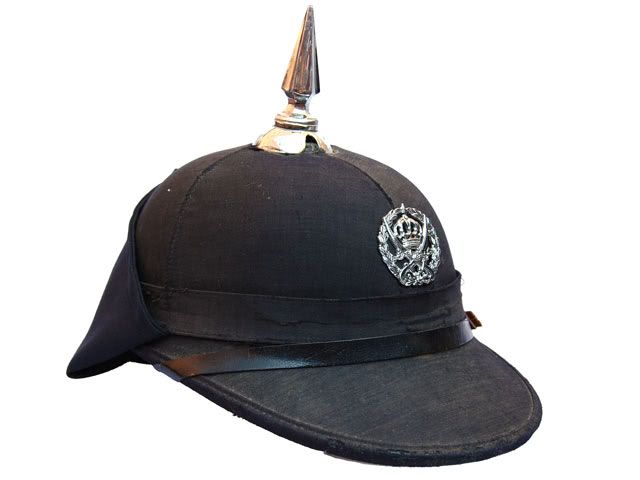
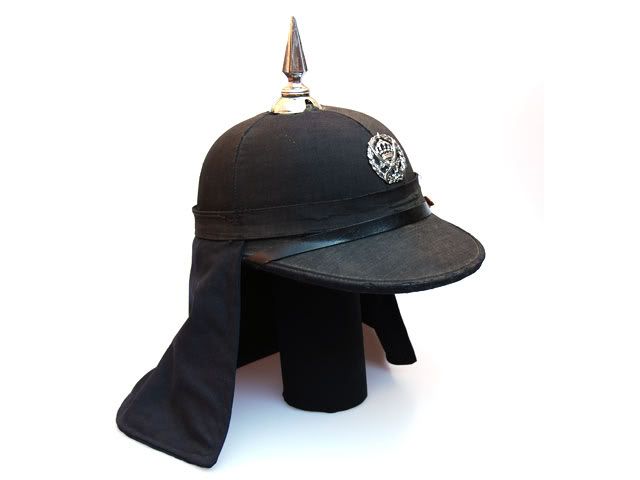
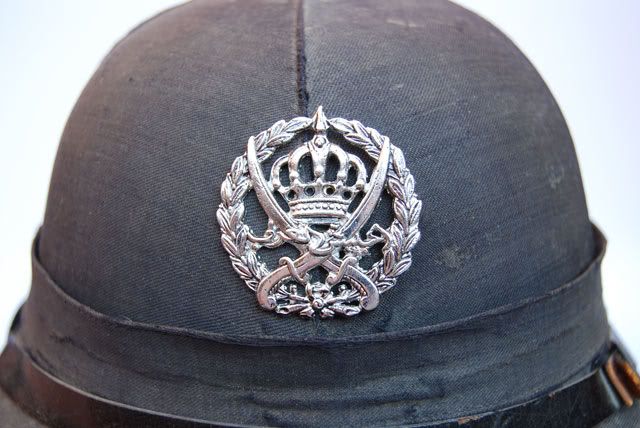
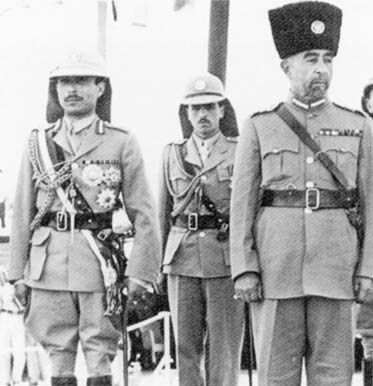 1
1 -
Many of these appeared in my book Military Sun Helmets of the World, which I wrote with the help of Stuart Bates. But a few didn't make it.
Circa 1808 Argentine Military Police sun helmet:

Model 1930 Argentine sun helmet, sometimes called the "casco italiano" as it was based on the Italian M1928 sun helmet.

A variation of the Model 1930 sun helmet, it appears this owner wore it "backwards" with the small brim to the front.

An oversized, private purchase and/or officer's pattern. This helmet is huge!
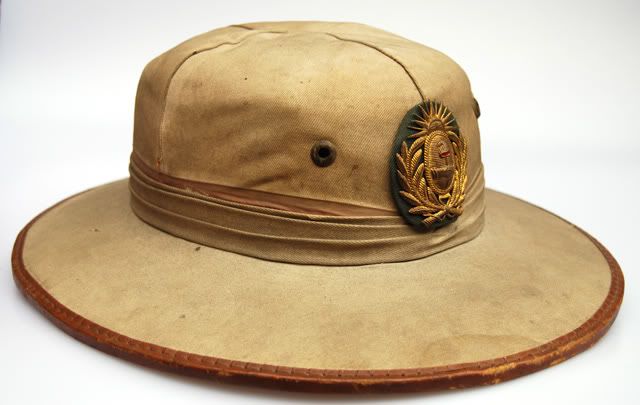
An American style pressed fiber helmet from the late 1940s with the Argentine badge:
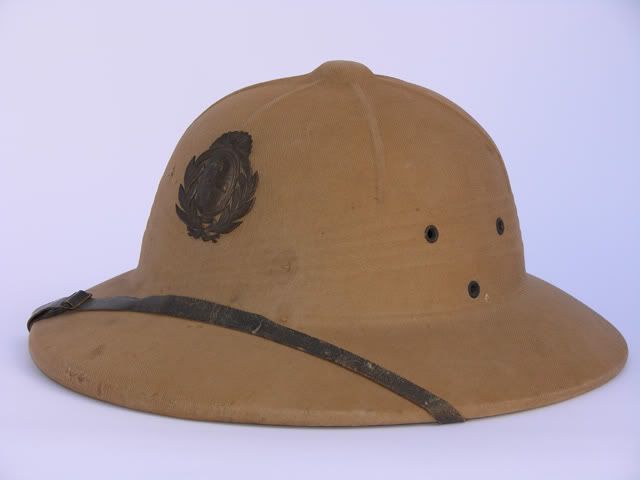
A Brazilian helmet. While not really a "sun helmet" these were copies of the French "Adrian" helmet but were made of a waterproof fiber and were used as sun helmets in the late 1930s:
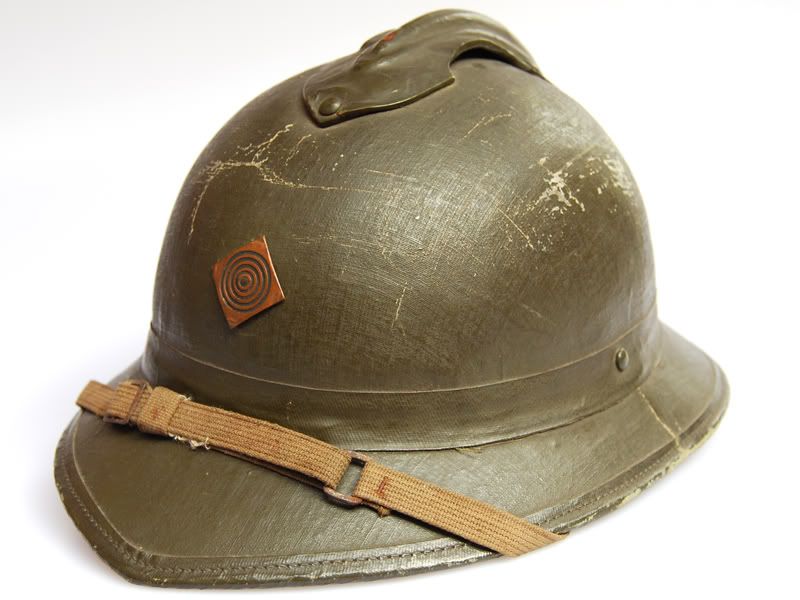
A Gran Chaco era sun helmet from Paraguay. This was likely Argentine-made, and painted to match the brown Paraguayian uniforms and to possibly waterproof it.
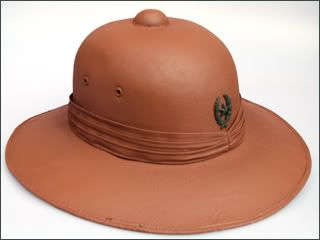
A Peruvian Civil Guard Cavalry helmet of the type used in the 1940 war with Ecuador. It is a French Model 1931 helmet that has been dyed greenish/blue to match the uniforms.
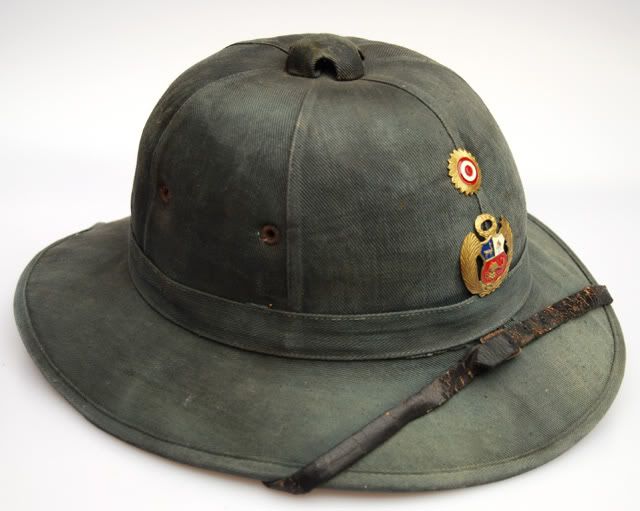
An Uruguayan army sun helmet. It is a French Model 1931 helmet that was either imported from France, or a South American made copy.
 0
0 -
Here is a recent pickup. Something "completely" different. This is an Arab Legion, later the Jordanian National Guard, helmet. These were issued in gray/khaki, and in black for the military police units. I'm hoping to find a gray/khaki one as well. But I was fortunate enough to find this one.
This example is undated, but was made by Hobson & Sons, London, which should date it to pre-1948.



 0
0 -
In Southern Africa they also had "really, really, slow film"... and you could get all kinds of effects, this being one example :-)
The irony in this Chris is that I missed this thread as I was actually in Africa when it was first posted. I was in Egypt and have been slowly catching up on posts that I missed. I just found a similar helmet for sale and was talking to Stuart about it, so my slow response has a reason... and you? :sleep:
0 -
Any particular "reason" for a flat top rather than the usual dome?
In profile it is eerily reminiscent of an imperial German Jäger's shako under a Feldgrau cover.
The Germans actually had a khaki tropical Jäger shako too! Stuart and I included in our book, but alas neither of us own such an example. I don't know how many were made.
0 -
That is a very nice example. I now have four Ethiopian sun helmets. I think there are probably a lot more than 100 however. Back in the spring of 2007 I saw the first one for sale, at least that I noticed. The bidding went to $600 and I didn't get it. Then a couple months later I was in Paris and was outbid again, as that one went for $700. I was determined to find one and contacted every dealer of Ethiopian goods and I found a helmet... and paid far less than $600! I think I must have shaken loose a hornets nest because now I see this with a lot regularity. I was told a cache of helmets was uncovered because some Westerner kept asking about these, and when he offered "cash," every old military store room was emptied trying to find the damn things! Seriously, that's what I heard from another dealer, with the question, "you're not that guy."
Here are a few of my examples:
This is the most recent addition. Note that the cockade on the side has reversed colors from the later ones. This is Red/Yellow/Green. I have found a source that says that this was the original color pattern, but after Italy invaded the colors were reversed, so as not to get confused with the Italian's Red/White/Green:
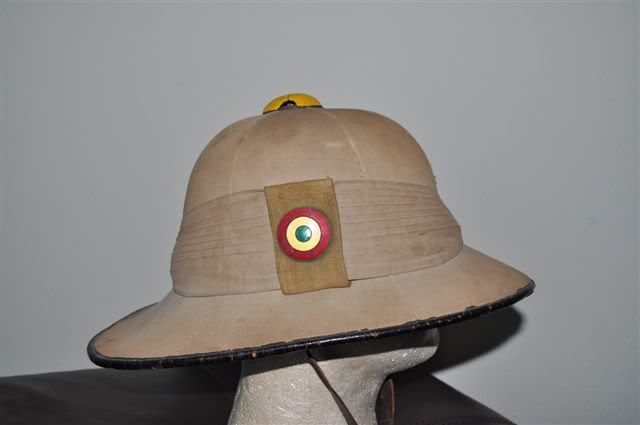
This is my World War II era helmet. It is a British polo helmet, and features the Ethiopian flash.
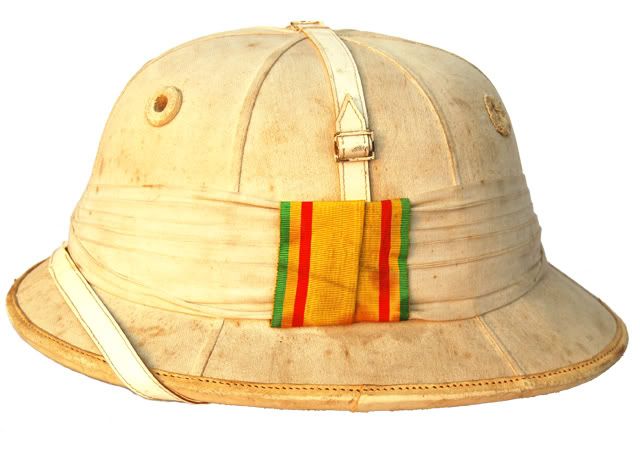
A period photo showing the type of polo helmets:
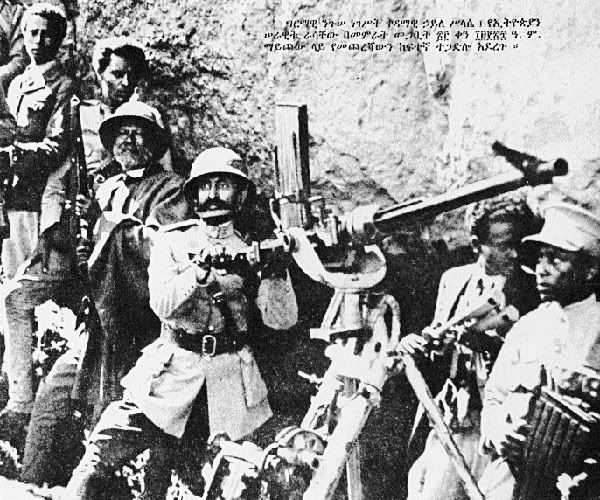
My early post-war helmet, circa early 1960s I believe:
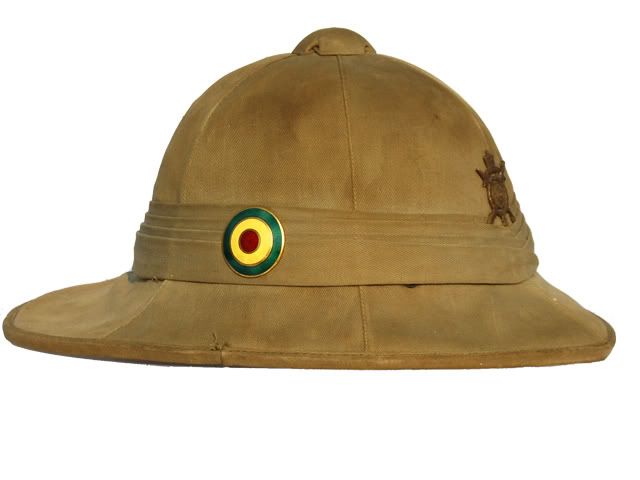
My final one, a later 1970s era helmet. Note this badge is of poor quality.
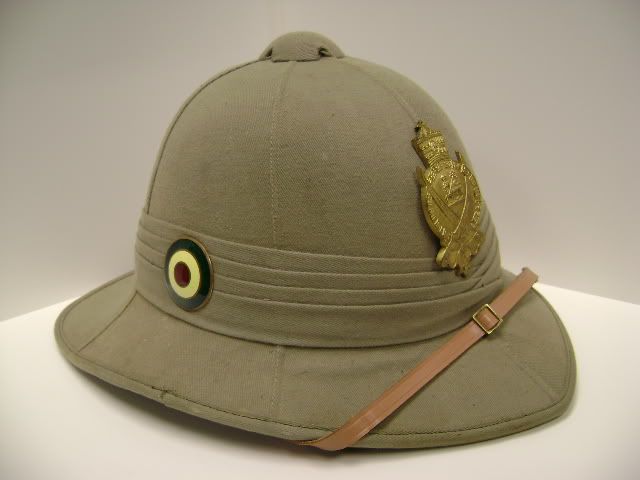 0
0 -
I haven't posted in a while, so I figured I'd post this one. My Royal Artillery helmet.
 1
1 -
Copies of Military Sun Helmets of the World are now available. Send me a PM if you are interested in a copy.
0 -
I am hoping to have the copies of the book within the next week. As soon as the copies arrive I will let you know. This has been a lifelong drive to write this book, and I am honored to have been aided by Stuart with it.
I hope everyone is pleased with the results.
0 -
The K.k. navy wore them right in home waters in hot weather before the war.
Great photo Rick. That's fantastic. The sun helmets were mainly used byt he Austro-Hungarian Navy and the Foreign Service before the war. What's interesting is that the early sun helmets, like those of the Anglo-Indian makers were cork. By the time of the war heated up in the Near East in Palestine the Austrians began to use the straw helmets.
0 -
Well, considering that Austria-Hungary had no overseas colonies it would seem strange that the country would ever produce sun helmets. But in fact the Austro-Hungarian army did on two occasions. The first was when they sent troops to Crete in 1895, and then again in World War I. The Austrian Army sent men to the Palestine Front. I never expected to be able to track down such a desireable piece... but luck favored me. I was stressed out waiting for this to arrive, and probably drove my wife and friends to near insanity as I was like a five year old waiting for Christmas Day!
But it was worth the wait:

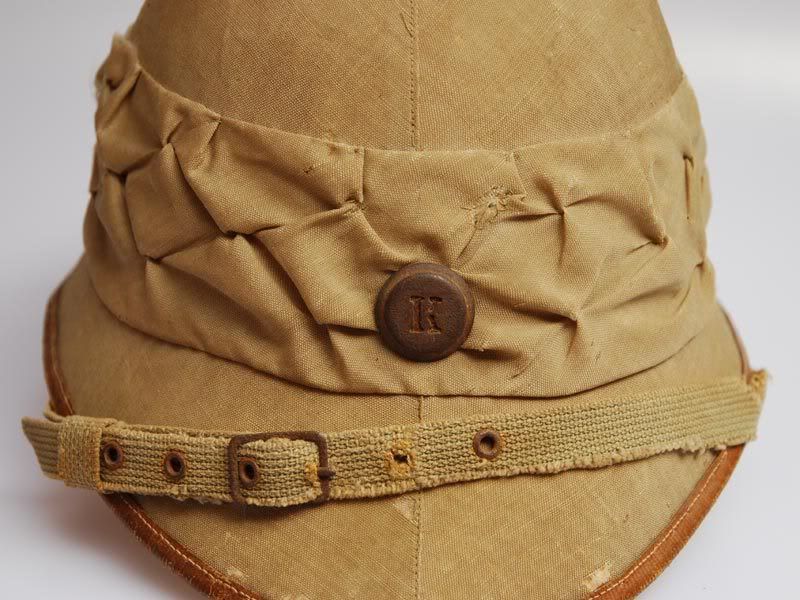

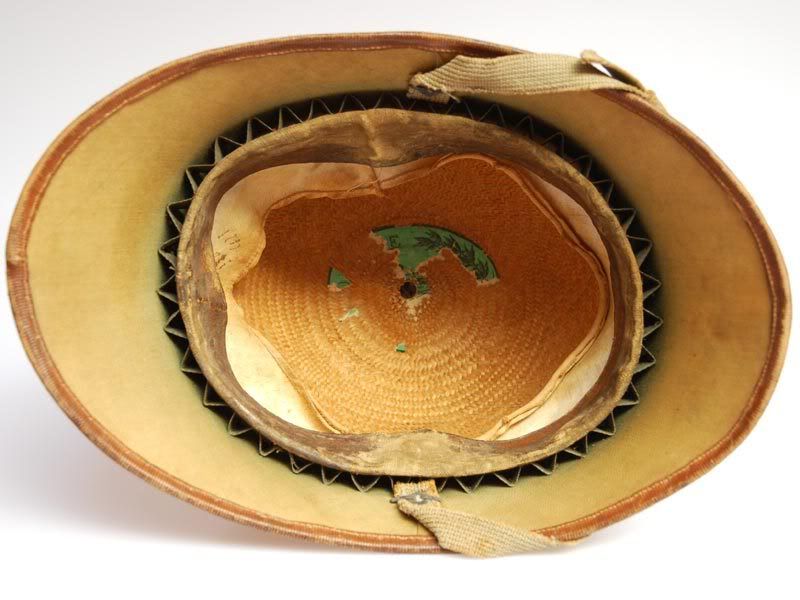 0
0 -
Badge looks rather shiny no? Got a close up pls?
The helmet was originally photographed with a bit of sun in the sky and that may have made it look shinny. Here is a better close up.
 0
0 -
Nice helmet Peter, now you need to show us the ORs back badge as fitted.

If only I can find such a helmet! While British Officer blue cloth Home Service Helmets are easy to find the OR helmets are seldom out there. This is because the Officer helmets were private purchase while the OR helmets were government property and most were used until they fell apart. Many others were likely trashed.
I'm lucky to have found the Artists' Rifles OR helmet. But that was a Volunteer unit so I beleive even the OR helmets were private purchase. I've never seen an Artists' Rifles helmet in a private collection either.
0 -
Here are some larger shots of the Gloucestershire helmet. I'm told some of my photos are too small.
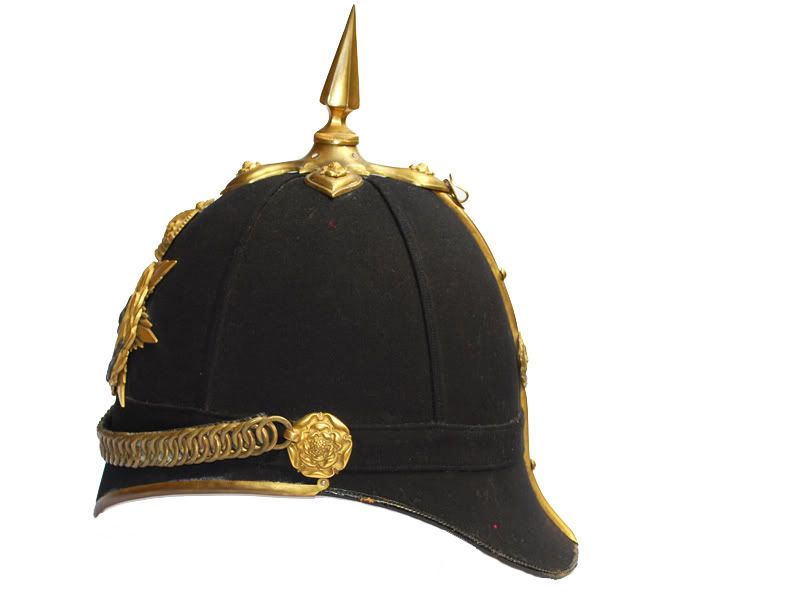
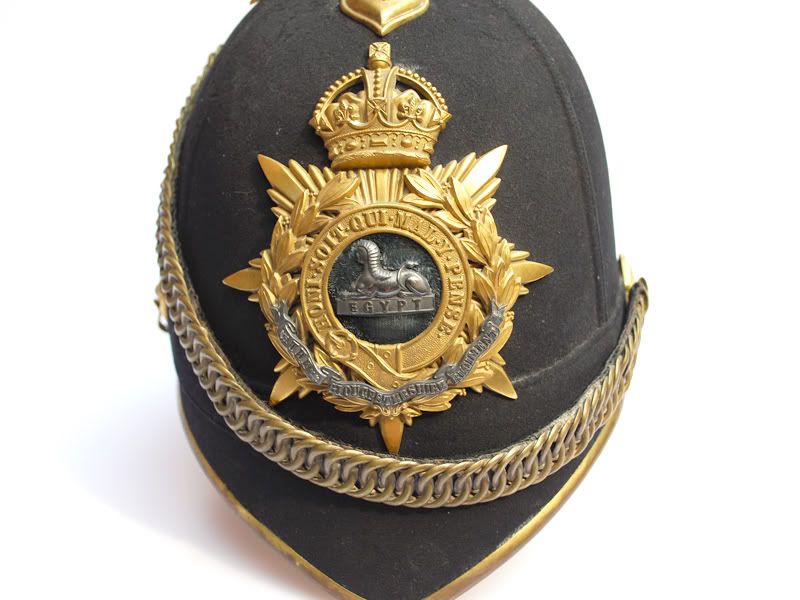
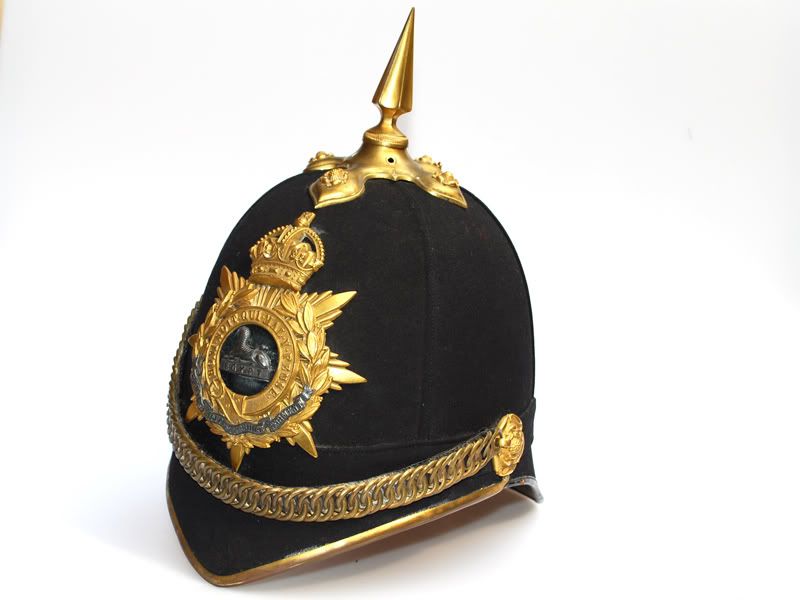
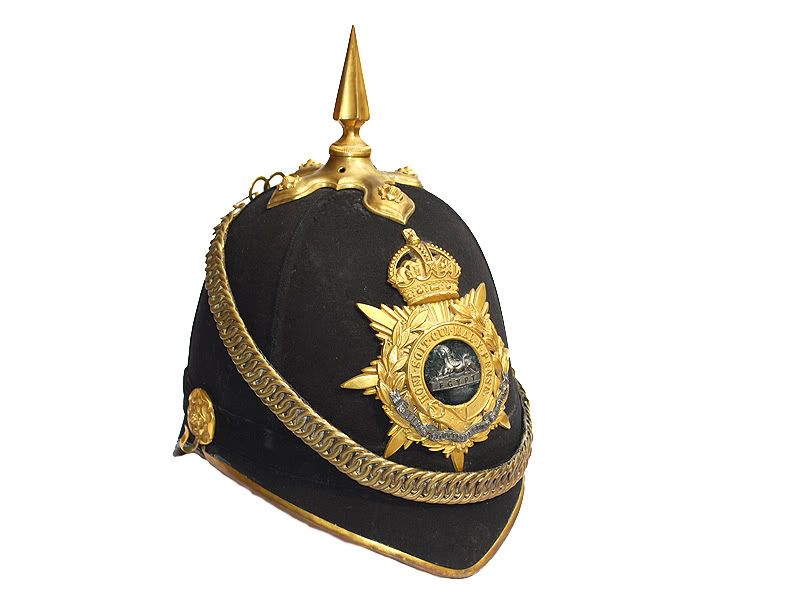
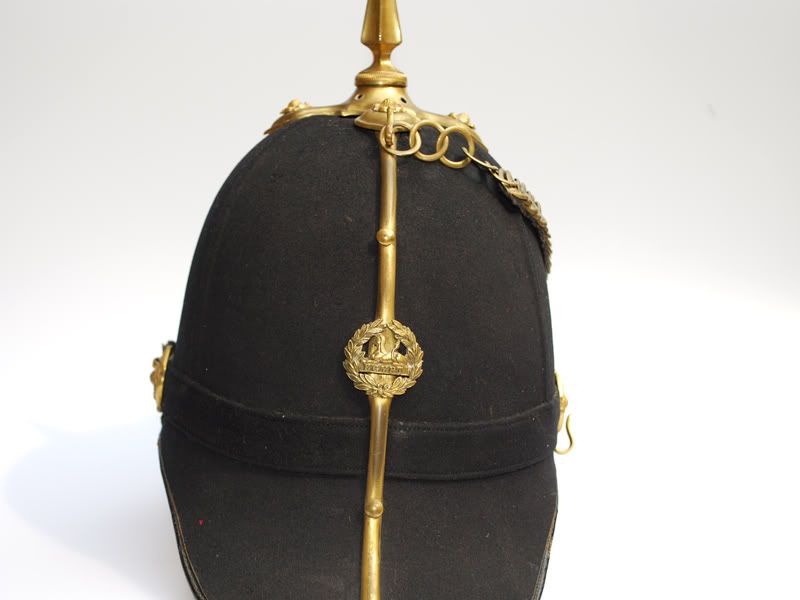 0
0 -
This is the Glamorgan Imperial Yeomanry helmet. I've posted before, but this is by far my favorite helmet in my collection:
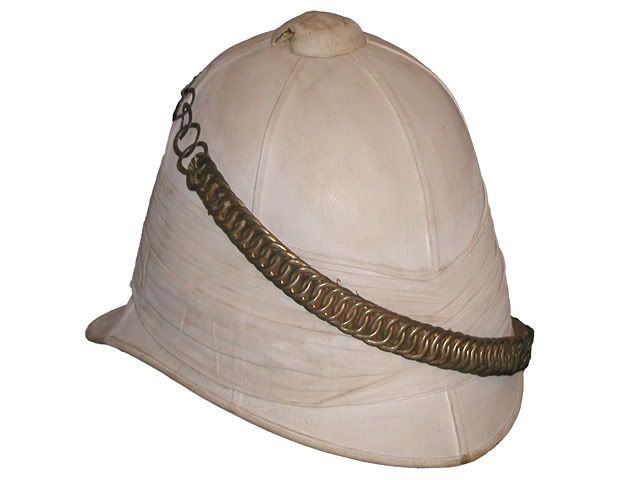
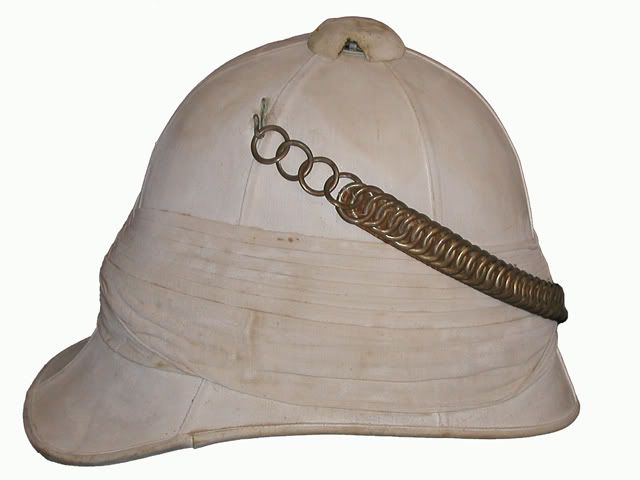
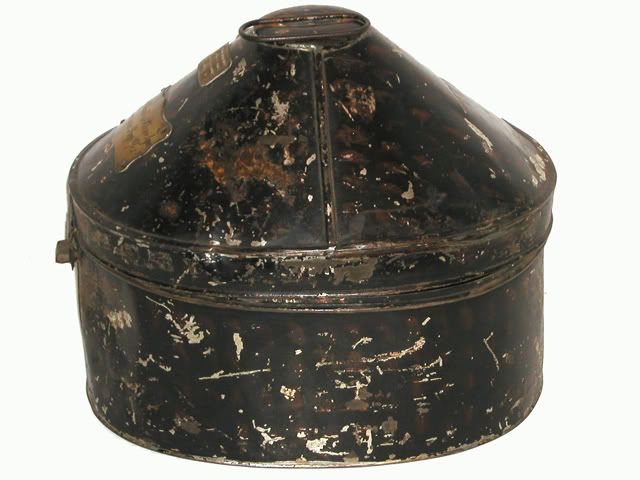
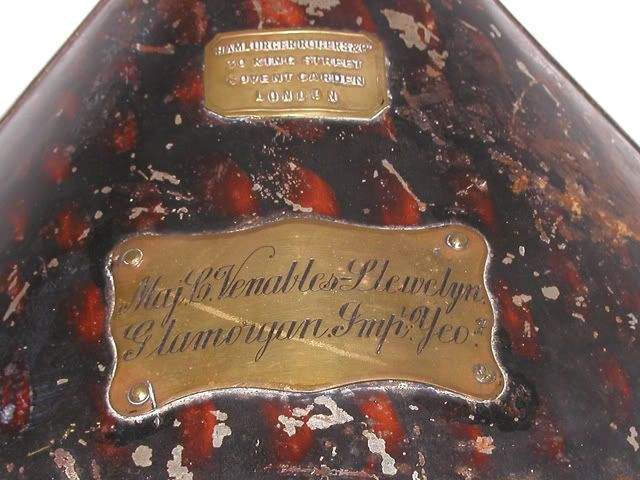
And the original owner:

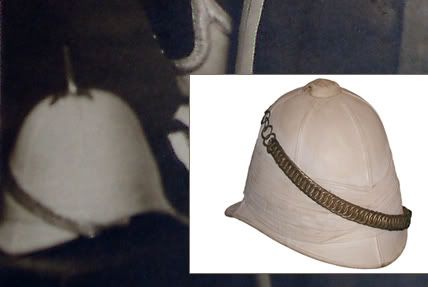 0
0 -
This is the Artists' Rifles Helmet
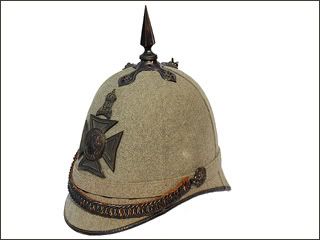
 0
0 -
I had never known how the back badge fitted to the helmet either, and had previously purchased a Gloucestershire helmet, which I later returned to the seller. Stuart Bates and I contacted the Gloucestershire Regimental Museum and they provided a photo from their collection, which did show the badge mounted to the spine. It is interesting to note that both that example and mine have a slight bend in the spine... clearly it was designed to have something mounted to it!
I have another example of a WWI era slider cap badge and the back badge has the west/east loop fittings.
I will hold onto the tin for now, but I may end up donating it to the museum if/when I make it there. I have never been to Gloucestershire, but I hope to get to the Regimental Museum.
The irony is that I bought the first helmet, and then read up on the history of the regiment. I've managed to find a few items related to the Glorious Gloucs as well, but I'm absolutely pleased to find this helmet.
I also try to seek out items from the Artists Rifles and the Glamorgan Imperial Yeomanry. I have helmets from those regiments as well.
0 -
A superb example to a famous Regiment, thanks for showing us. Is the helmet named to its original owner?

Well, the helmet was sold with a tin that says, "Major Brodigan, 28th Reg." But I have to take that with a grain of salt. The Regiment was the 28th North Gloucestershire until 1880, but the helmet has a post-1901 King's Crown. So that doesn't exactly add up. The tin might be worth something on its own, as Colonel Francis Brodigan served as the commanding officer at the time of the consolidation with the South Gloucestershire Regiment.
I know that Colonel Brodigan had at least one son who served in the regiment, so I considered that the son might have used his father's tin, but that's doubtful. Franics John Brodigan reached the rank of Captain and was killed in action in May of 1915. So I doubt he'd use a tin that said, "Major Brodigan."
Hence I have to assume the helmet and tin were "married" at some later date. Hence it might be hard to track the helmet to an original owner. There is no name inside.
0 -
It's remarkably difficult to find the feathers still attached.

I don't think this helmet saw much action. I wonder why?
0 -
This Italian Model 1928 sun helmet features the badge and feathers of the 8th Bersaglieri. In February 1941 the 8th Bersaglieri regiment landed at Tripoli and were incorporated into the Ariete Armoured Division. The XX Motorised Corps working in support of the 132nd Tank regiment were the most active and well known heavy armored unit in the Italian Army.
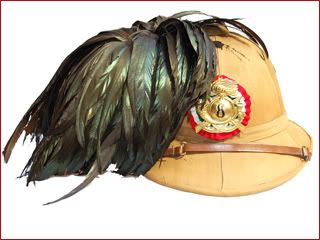
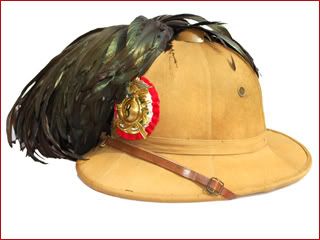 0
0 -
Another holy grail helmet for me. This is of the Gloucestershire Regiment. This is the only unit in the British Army (or maybe any army for that matter) that has the honor of wearing a badge to the back as well as front of cap/helmet. This was allowed following the 1801 Battle of the Nile, where the unit fought off French Infantry to the front and defended against French Cavalry to the rear.
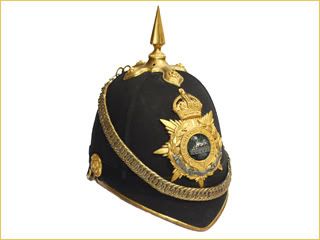
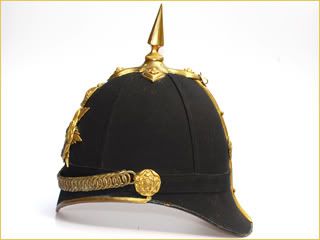
 0
0 -
I have an interest in sun helmets from around the world, and I know that the Spanish and Portuguese both used sun helmets. But I seldom ever see these come up for sale... and in fact have yet to see a real one up close.
Were these just very rare, did few survive, what's the deal? :rolleyes:
0




Ethiopian Imperial Guard Wolseley Helmet
in Africa
Posted
I think the deal here is that the Ethiopian Army had a lot of these and dozens or more sat in storage when the Monarchy fell. I don't know how much use any of these actually had gotten either.
This latest helmet has an infantry/army insignia so I don't think it would be a case of certain guards wearing a cockade on the left and others wearing in the right. I think this was either a local mistake by the soldier, or probably a bunch of parts put together that were found in the depot. No way to know. The amount of information on these is scattered at best!